Papers by Zeid A . ALOthman
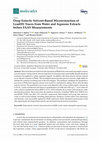
Microextraction procedures for the separation of Pb(II) from water and food samples extracts were... more Microextraction procedures for the separation of Pb(II) from water and food samples extracts were developed. A deep eutectic solvent composed of α-benzoin oxime and iron(III) chloride dissolved in phenol was applied as a phase separator support. In addition, this deep eutectic mixture worked as an efficient extractor of Pb(II). The developed microextraction process showed a high ability to tolerate the common coexisting ions in the real samples. The optimum conditions for quantitative recoveries of Pb(II) from aqueous extracts were at pH 2.0, conducted by adding 150 µL from the deep eutectic solvent. The quantitative recoveries were obtained with various initial sample volumes up to 30 mL. Limits of detection and limits of quantification of 0.008 and 0.025 µg L −1 were achieved with a relative standard deviation (RSD%) of 2.9, which indicates the accuracy and sensitivity of the developed procedure. Recoveries from the reference materials, including TMDA 64.2, TMDA 53.3, and NCSDC-73349, were 100%, 97%, and 102%, respectively. Real samples, such as tap, lake, and river water, as well as food samples, including salted peanuts, chickpeas, roasted yellow corn, pistachios, and almonds, were successfully applied for Pb(II) analysis by atomic absorption spectroscopy (AAS) after applying the developed deep eutectic solvent-based microextraction procedures.
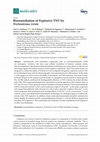
Nitroaromatic and nitroamine compounds such as 2,4,6-trinitrotoluene (TNT) are teratogenic, cytot... more Nitroaromatic and nitroamine compounds such as 2,4,6-trinitrotoluene (TNT) are teratogenic, cytotoxic, and may cause cellular mutations in humans, animals, plants, and microorganisms. Microbial-based bioremediation technologies have been shown to offer several advantages against the cellular toxicity of nitro-organic compounds. Thus, the current study was designed to evaluate the ability of Trichoderma viride to degrade nitrogenous explosives, such as TNT, by microbiological assay and Gas chromatography-mass spectrometry (GC-MS) analysis. In this study, T. viride fungus was shown to have the ability to decompose, and TNT explosives were used at doses of 50 and 100 ppm on the respective growth media as a nitrogenous source needed for normal growth. The GC/MS analysis confirmed the biodegradable efficiency of TNT, whereas the initial retention peak of the TNT compounds disappeared, and another two peaks appeared at the retention times of 9.31 and 13.14 min. Mass spectrum analysis identified 5-(hydroxymethyl)-2-furancarboxaldehyde with the molecular formula C 6 H 6 O 3 and a molecular weight of 126 g•mol −1 as the major compound, and 4-propyl benzaldehyde with a formula of C 10 H 12 O and a molecular weight of 148 g mol −1 as the minor compound, both resulting from the biodegradation of TNT by T. viride. In conclusion, T. viride could be used in microbial-based bioremediation technologies as a biological agent to eradicate the toxicity of the TNT explosive. In addition, future molecular-based studies should be conducted to clearly identify the enzymes and the corresponding genes that give T. viride the ability to degrade and remediate TNT explosives. This could help in the eradication of soils contaminated with explosives or other toxic biohazards.
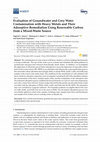
The contamination of water sources with heavy metals is a serious challenge that humanity is faci... more The contamination of water sources with heavy metals is a serious challenge that humanity is facing worldwide. The aim of this work was to evaluate and remediate the metal pollution in groundwater and greywater resources from Riyadh, Saudi Arabia. In addition, we investigated the application of ultrasonic power before adsorption to assess the dispersion of renewable carbon from mixed-waste sources (RC-MWS) as an adsorbent and enhance the water purification process. The renewable carbon adsorbent showed high ability to adsorb Pb(II), Zn(II), Cu(II), and Fe(II) from samples of the actual water under study. The conditions for the remediation of water polluted with heavy metals by adsorptive-separation were investigated, including the pH of the adsorption solution, the concentration of the heavy metal(s) under study, and the competition at the adsorption sites. The enhanced adsorption process exhibited the best performance at a pH of 6 and room temperature, and with a contact time of 60 min. Kinetic studies showed that the pseudo-second-order kinetic model was fitted with the adsorption of Pb(II), Zn(II), Cu(II), and Fe(II) onto the RC-MWS. The adsorption data were well fitted by Langmuir isotherms. The Freundlich isotherm was slightly fitted in the cases of Cu(II), Zn(II), and Fe(II), but not in the cases of Pb(II). The developed adsorption process was successfully applied to actual water samples, including water samples from Deria and Mozahemia and samples from clothes and car washing centers in Riyadh city.
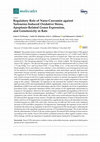
The present study evaluates the regulatory effect of Nano-Curcumin (Nano-CUR) against tartrazine ... more The present study evaluates the regulatory effect of Nano-Curcumin (Nano-CUR) against tartrazine (TZ)-induced injuries on apoptosis-related gene expression (i.e., p 53 , CASP-3 and CASP-9), antioxidant status, and DNA damages in bone marrow in treated rats. Male rats were arbitrarily separated into five groups, and each group was comprised of 10 rats each. The 1st group served as control (G1). The 2nd group ingested 7.5 mg TZ/kg. b.w. (body weight). The 3rd group ingested Nano-CUR 1 g/kg b.w. The 4th and 5th groups were respectively administered with (1 g Nano-CUR + 7.5 mg TZ/kg. b.w.) and (2 g Nano-CUR + 7.5 mg TZ/kg. b.w.). At the end of the experiment, blood samples, livers, and kidneys were collected. Livers and kidneys were homogenized and used for the analysis of reduced glutathione, malonaldhyde, total antioxidant capacity, lipid peroxide antioxidant enzyme activities, apoptosis-related gene expression, and genotoxicity by comit test. The ingestion of TZ for 50 days resulted in significant decreases in body, and kidney weights in rats and a relative increase in the liver weight compared to control. In contrast, the ingestion of Nano-CUR with TZ remarkably upgraded the body weight and relative liver weight compared to the normal range in the control. Aditionally, TZ ingestion in rats increased the oxidative stress biomarkers lipid peroxide (LPO) and malonaldehyde (MDA) significantly, whereas it decreased the reduced glutathione (GSH) levels and total antioxidant capacity (TAC). Similarly, the levels of glutathione peroxidase (GPx), superoxide dismutase (SOD), and catalase (CAT) significantly deteriorated in response to TZ ingestion. Moreover, the results revealed a remarkable up-regulation in the level of expression for the three examined genes, including p 53 , CASP-3, and CASP-9 in TZ-ingested rats compared to the control. On the other hand, the comet assay result indicates that the ingestion of TZ induced DNA damage in bone marrow. Notably, the administration of Nano-CUR protected the kidney and liver of TZ-ingested rats as evidenced by a significant elevation in all antioxidant activities of tested enzymes (i.e, SOD, GPx, and CAT), vital recovery in GSH and TAC levels, and a statistical decrease in LPO and MDA compared to TZ-ingested rats. Interestingly, the ingestion of rats with TZ modulates the observed up-regulation in the level of expression for the chosen genes, indicating the interfering role in the signaling transduction process of TZ-mediated poisoning. The results indicate that the administration of Nano-CUR may protect against TZ-induced DNA damage in bone marrow. According to the results, Nano-CUR exerted a potential protective effect against oxidative stress, DNA damage, and the up-regulation of apoptosis-related genes induced by TZ ingested to rats.
Soylak (2020): Thiomalic acid/ferric chloride-based deep eutectic solvent for microextraction of ... more Soylak (2020): Thiomalic acid/ferric chloride-based deep eutectic solvent for microextraction of chromium in natural water samples prior to FAAS analysis, International Journal of Environmental Analytical Chemistry,

The contamination of water surfaces by mercury is a dangerous environmental problem due to its to... more The contamination of water surfaces by mercury is a dangerous environmental problem due to its toxicity, which leads kidney damage. Activated carbon from mixed recyclable waste modified by phosphonium-based ionic liquid (IL-ACMRW) was therefore prepared and evaluated for Hg(II) remediation. The activated carbon used in this study was prepared from mixed waste, including cardboard, papers and palm wastes as cheap raw materials. The mixed Recyclable Waste Activated Carbon was combined with trihexyl(tetradecyl)phosphonium Bis2,4,4-(trimethylpentyl)phosphinate (Cyphos ® IL 104) ionic liquid to form an adsorbent with organic-inorganic content, in order to improve the Hg(II) uptake from aqueous solutions. FTIR confirms the presence of P, C=O and OH after this modification. The adsorption process was investigated and the evaluated results showed that the capacity was 124 mg/g at pH 4, with a contact time of 90 min, an adsorbent dose of 0.4 g/L, and a Hg(II) concentration of 50 mg/L. This Hg(II) adsorption capacity is superior than that reported in the literature for modified multiwall carbon nanotubes. The adsorption of Hg(II) on the modified activated carbon from mixed recyclable waste was found to follow the pseudo second-order kinetics model. Isotherms of adsorption were analyzed via Freundlich and Langmuir models. The results indicated that Freundlich is the best model to describe the process, suggesting multilayer adsorption.
CLEAN - Soil, Air, Water, 2014
Environmental Science and Pollution Research, 2013
carbon, 2011
Activated carbon was prepared by the copyrolysis of mixed solid wastes (biomass, cartons and poly... more Activated carbon was prepared by the copyrolysis of mixed solid wastes (biomass, cartons and polystyrene) at low carbonization temperatures. The effects of carbonization temperature (200°C, 300°C and 400°C) and chemical activation using different concentrations of a ZnCl 2 solution (0.0, 0.5, 1.0 and 2 M) on the yield and adsorption capacity of activated carbon were investigated. The results show that the activated carbon yield is significantly dependent on both the carbonization temperature and the ZnCl 2 concentration. The yield increased as the ZnCl 2 concentration increased from 0.0 to 2 M and decreased as the carbonization temperature increased from 200°C to 400°C. In conclusion, treating solid wastes with a low carbonization temperature (200°C) followed by chemical activation with 2 M ZnCl 2 yielded AC with a high adsorption efficiency.
Arabian Journal of Chemistry, 2012

Arabian Journal of Chemistry, 2014
Wastes must be managed properly to avoid negative impacts that may result. Open burning of waste ... more Wastes must be managed properly to avoid negative impacts that may result. Open burning of waste causes air pollution which is particularly hazardous. Flies, mosquitoes and rats are major problems in poorly managed surroundings. Uncollected wastes often cause unsanitary conditions and hinder the efforts to keep streets and open spaces in a clean and attractive condition. During final disposal methane is generated, it is much more effective than carbon dioxide as a greenhouse gas, leading to climate change. Therefore, this study describes the possible valorization of two waste streams into activated carbon (AC) with added value due to copyrolysis. High efficiency activated carbon was prepared by the copyrolysis of palm stem waste and lubricating oil waste. The effects of the lubricating oil waste to palm stem ratio and the carbonization temperature on the yield and adsorption capacity of the activated carbon were investigated. The results indicated that the carbon yield depended strongly on both the carbonization temperature and the lubricating oil to palm stem ratio. The efficiency of the adsorption of methylene blue (MB) onto the prepared carbons increased when the lubricating oil to palm stem ratio increased due to synergistic effect. The effects of pH, contact time, and the initial adsorbate concentration on the adsorption of methylene blue were investigated. The maximum adsorption capacity (128.89 mg/g) of MB occurred at pH 8.0.
Colloids and Surfaces A: Physicochemical and Engineering Aspects, 2011
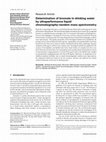
Journal of Separation Science, 2012
Bromate is a byproduct formed as a result of disinfection of bromide-containing source water with... more Bromate is a byproduct formed as a result of disinfection of bromide-containing source water with ozone or hypochlorite. The International Agency for Research on Cancer has recognized bromate as a possible human carcinogen, thus it is essential to determine in drinking water. Present work highlights a development of sensitive and fast analytical method for bromate determination in drinking water by using ultraperformance liquid chromatography-tandem mass spectrometry. The quality parameters of the developed method were established, obtaining very low limit of detection (0.01 ng/mL), repeatability and reproducibility have been found to be less than 3% in terms of relative standard deviation when analyzing a bromate standard at 0.05 g/mL with 0.4 min analysis time. Developed method was applied for the analysis of metropolitan and bottled water from Saudi Arabia; 22 samples have been analyzed. Bromate was detected in the metropolitan water samples (from desalinization source) at concentrations ranging between 3.43 and 75.04 ng/mL and in the bottled water samples at concentrations ranging between 2.07 and 21.90 ng/mL. Moreover, in comparison to established analytical methods such as liquid chromatography-tandem mass spectrometry, the proposed method was found to be very sensitive, selective and rapid for the routine analysis of bromate at low level in drinking water.
Journal of Industrial and Engineering Chemistry, 2014

RSC Advances, 2014
ABSTRACT Industrial effluents with dyes may contain appreciable concentrations of materials with ... more ABSTRACT Industrial effluents with dyes may contain appreciable concentrations of materials with high chemical oxygen demand and suspended solids, posing adverse effects to both humans and aquatic life; therefore, these effluents require quantitative monitoring. In the present study, an analytical method based on solid-phase extraction (SPE) and ultra-performance liquid chromatography-tandem mass spectrometry (UPLC-MS/MS) has been optimized for the quantitative analysis of methylene blue (MB) in environmental samples. For the extraction of MB, a variety of solvents, including formic acid, were investigated to obtain optimum recovery. MB extraction using the SPE method was best achieved using methanol with 1 M formic acid. Chromatographic separation of MB and methylene violet 3RAX (MV 3RAX, internal standard) was accomplished on an Acquity r BEH C18 column using water (64.99%) with formic acid (0.01%) and acetonitrile (35%) in isocratic elution mode. Chromatographic separation for both MB and MV 3RAX was achieved in < 2 min with good resolution and superior peak symmetry. MB and MV 3RAX were quantified with electrospray ionization coupled with MS/MS in the multiple reaction monitoring mode. Good quality parameters were achieved for instance linearity (r(2) > 0.999), run-to-run and day-to-day precisions with relative standard deviations of < 4%, sensitivity with a low limit of detection (LOD) of 0.1 ng mL(-1) and limit of quantification (LOQ) of 0.4 ng mL(-1) were obtained. Industrial wastewater samples (paper, textile, laundry and printing press) were analyzed, and an MB level was found in between 0.36 and 1.08 mu g mL(-1) with excellent recovery rates (95-99%) depending on samples.

Chemical Engineering Journal, 2015
ABSTRACT Novel PMDA/TMSPEDA hybrid polymeric nano-composite (HPNC) was synthesized by ring openin... more ABSTRACT Novel PMDA/TMSPEDA hybrid polymeric nano-composite (HPNC) was synthesized by ring opening polymerization and sol–gel reaction. TGA analysis showed thermally stable polymeric material. FT-IR analysis revealed co-ordinate bonding between amine groups (present on HPNC) and bivalent metal ions as a possible adsorption mechanism. Adsorption studies showed maximum uptake of Pb(II) (49.72 mg/g) on HPNC followed by Cd(II) (45.22 mg/g), and Zn(II) (41.75 mg/g) at pH 7. Thermodynamically, the process was exothermic. Freundlich and pseudo-second-order kinetics model were the best fitted models to the experimental data. Kinetics studies showed better performance of HPNC for Cd(II) at lower concentration while Pb(II) adsorption was highly favorable at higher concentration. Rapid adsorption kinetics was observed for Pb(II) with equilibration time at various concentrations varied between 10 and 30 min. Desorption studies showed maximum metal elution [Pb(II) (94.13%) > Zn(II) (93.59%) > Cd(II) (84.15%)] with 0.1 M HCl. Regeneration studies showed 28.99% and 16.96% loss in Pb(II) adsorption and recovery after four consecutive cycles, respectively. The findings of present study showed potentiality of HPNC as an effective and economically feasible adsorbent for Pb(II).
Journal of Food Processing and Preservation, 2016
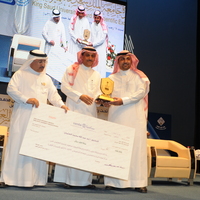








Uploads
Papers by Zeid A . ALOthman